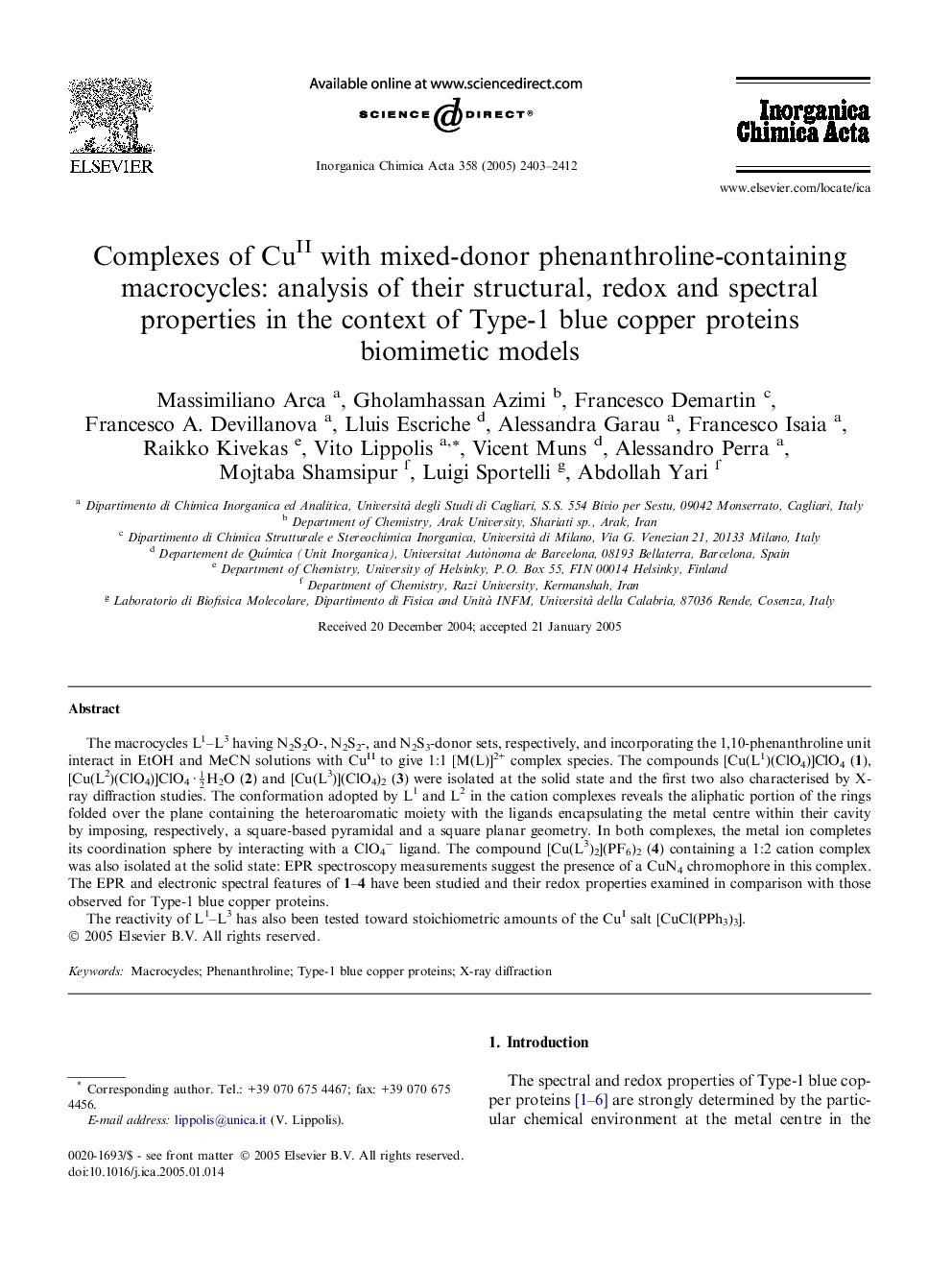| Article ID | Journal | Published Year | Pages | File Type |
|---|---|---|---|---|
| 1308592 | Inorganica Chimica Acta | 2005 | 10 Pages |
The macrocycles L1–L3 having N2S2O-, N2S2-, and N2S3-donor sets, respectively, and incorporating the 1,10-phenanthroline unit interact in EtOH and MeCN solutions with CuII to give 1:1 [M(L)]2+ complex species. The compounds [Cu(L1)(ClO4)]ClO4 (1), [Cu(L2)(ClO4)]ClO4 · 12H2O (2) and [Cu(L3)](ClO4)2 (3) were isolated at the solid state and the first two also characterised by X-ray diffraction studies. The conformation adopted by L1 and L2 in the cation complexes reveals the aliphatic portion of the rings folded over the plane containing the heteroaromatic moiety with the ligands encapsulating the metal centre within their cavity by imposing, respectively, a square-based pyramidal and a square planar geometry. In both complexes, the metal ion completes its coordination sphere by interacting with a ClO4− ligand. The compound [Cu(L3)2](PF6)2 (4) containing a 1:2 cation complex was also isolated at the solid state: EPR spectroscopy measurements suggest the presence of a CuN4 chromophore in this complex. The EPR and electronic spectral features of 1–4 have been studied and their redox properties examined in comparison with those observed for Type-1 blue copper proteins.The reactivity of L1–L3 has also been tested toward stoichiometric amounts of the CuI salt [CuCl(PPh3)3].
Graphical abstractThe macrocycles L1–L3 incorporating N2S2O-, N2S2-, and N2S3-donor sets, respectively, and containing the 1,10-phenanthroline unit have been studied in the interaction with CuII in EtOH and MeCN and the spectral and redox properties of the resulting 1:1 complexes have been compared to those of Type-1 blue copper proteins.Figure optionsDownload full-size imageDownload as PowerPoint slide
